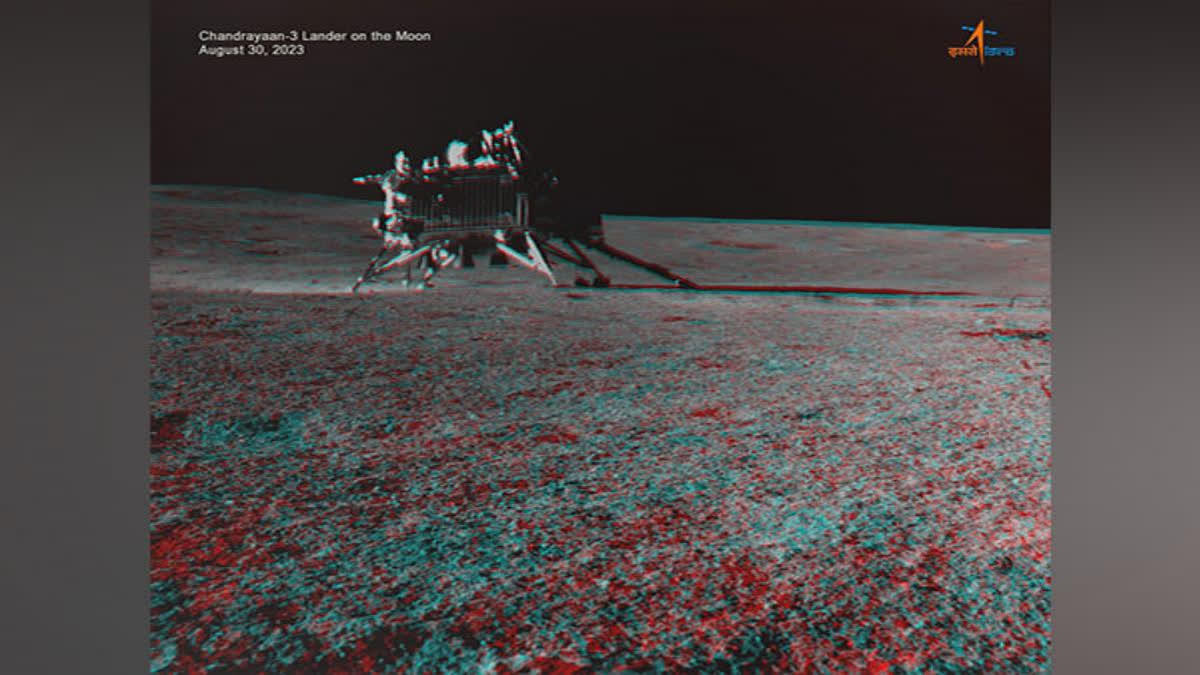Hyderabad: The Vikram lander and Pragyan rover of Chandrayaan-3, presently in "sleep mode" near the Moon’s South Pole after completing their assigned tasks, are now set to reawaken on Friday.
S Somanath, ISRO Chairman, expressed hope for the reawakening of the Vikram lander and Pragyan rover when the sun illuminates the Shivshakti Point. "We are hoping when the sun rises on the Shivshakti Point, the equipment will come back to life. The teams will be attempting to reboot the instruments on September 22 on Lunar dawn", he said.
In preparation for the reboot scheduled on Sept 22 during the lunar dawn, meticulous plans were executed. The equipment aboard Vikram and Pragyan were gradually put to sleep on Sept 2, ensuring optimal chances for revival.
- Batteries fully charged before sleep.
- Solar panels oriented to receive sunlight promptly upon sunrise.
- Receiver left on to endure lunar night's frigid temperatures.
A Frigid night- The feat, however is not be as easy as it sounds particularly due to how cold it gets in the lunar night, particularly at the pole. The night time temperatures reach upto -200°C to -250°C.
Absence of RHU- Unlike other crafts, Chandrayaan-3 lacks a Radioisotope Heating Unit (RHU), making this a considerable challenge. RHU is a small device that use the decay of plutonium -238 to generate heat to keep spacecraft components warm so that the equipment can survive long enough in the cold space environment to complete its mission.
Despite its intended 14-day mission duration due to lunar temperature extremes, Chandrayaan-3 marked India's success with a historic landing on the Moon's South Pole. The possibility of revival offers a renewed opportunity for scientific experiments and achievements.
Chandrayaan-3, India's third lunar mission, aimed for a safe landing, rover exploration, and in-situ scientific experiments. The Vikram lander's successful hop experiment holds promise for future lunar missions, inspiring upcoming sample return and human ventures.
Scientist's Perspective- Space scientist Suvendu Patnayak emphasised on the challenges of lunar temperatures on electronic components, explaining the expected 14-day operation period.
“The Chandrayaan-3 landed successfully and it worked for almost 14 days. It was designed to work for 14 days (on the moon). Its life period was only 14 days because the moon's temperature falls down to (-) 250 degrees during the (lunar) nighttime. So it worked during the sun hours or daytime and during that it had already given all the data (it was supposed to),” said scientist Suvendu Patnayak.
“It is very difficult for few electronic components to work in such a huge range of temperature. So it was expected it would not work after 14 days…But a few scientists are very hopeful that it may work again. So if it works again, it will be a boon for us and we will perform the same experiments again and again,” Patnayak added.



